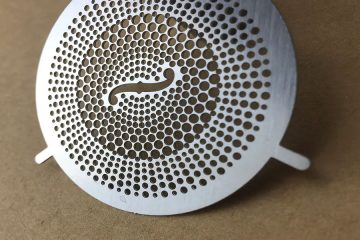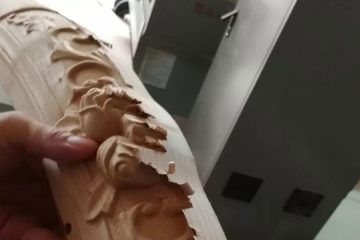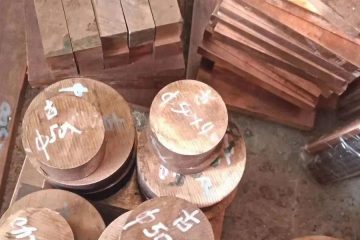The centering machine is a high-efficiency machining equipment that can achieve high-precision, high-efficiency, and high-quality machining. Next, I will introduce to you the workflow of swiss machining!
The process of swiss machining has the following steps
- The preprocessor converts the program to be processed into instructions that the controller can recognize, including machining path, axial speed and other parameters.
- The controller controls the operation of the program and monitors the entire machining process. It controls the swiss machining path and at the same time monitors the status of the machining process and feeds back data in real time based on the signal fed back by the sensor.
- The servo driver controls the running speed and direction of each axis of the heart machine. The function of the servo drive system is to maintain high-speed and high-precision machining of the centering machine.
- The spindle is responsible for rotating the machining tool and completing the material that needs to be cut. .
- The feed system is responsible for moving the workpiece and cutting tool to relative positions according to the prescribed path, and at the same time completing operations such as exit and tool change according to the machining parameters.
Working principle of the heart machine
Part machining is realized by mapping the motion trajectory of each axis to the surface of the workpiece by the CNC system. Specifically, the controller receives the pre-processed machining program, and then converts it into control signals such as spindle speed, feed rate, coordinate axis movement speed, etc., and controls the movement of the screw and guide rail attached to the relevant axis through the same motor. Movement to realize the machining of parts. Centering machines are mainly divided into two types: vertical and horizontal. Vertical and horizontal types have different machining capabilities and machining efficiencies. Among them, the vertical centrifugal machine is suitable for machining parts with a smaller area, while the horizontal centrifugal machine is suitable for machining larger areas and complex part designs. In general, how to process the working principle of the centering machine is mainly to control the relative movement between the tool and the workpiece by the CNC system. Specifically, the tool automatically cuts according to the pre-planned path. In this way, complex The workpiece can be completed through multiple single operations, the production cycle is greatly shortened, and the production accuracy and production efficiency are greatly improved.
Briefly describe the development process of swiss machining
The development history of swiss machining can be traced back to the 1950s. At that time, with the rapid development of computer technology, CNC machine tools began to become popular, which provided the foundation for the birth of Swiss machining technology. Swiss machining technology originally emerged to meet the machining needs of complex, high-precision parts.
In the 1960s, Swiss machining technology began to be applied in aviation, aerospace and other fields. Because these require machining of parts with complex shapes and precise dimensions, swiss machining technology can meet these needs.
In the 1970s, with the continuous advancement of machining technology, Stainless Steel Swiss machining technology has also been continuously improved and perfected. At this time, the application scope of Swiss machining technology gradually expanded and began to enter the automotive, electronics, medical and other industries. At this time, the machining accuracy and efficiency of swiss machining technology are also constantly improving.
After the 1980s, computer technology developed faster and faster, and Swiss machining technology began to enter the digital era. Digital swiss machining technology can be more precise and improve machining efficiency and accuracy. At the same time, digital Swiss machining technology can also realize automated machining and reduce labor costs.
Entering the 21st century, Swiss machining technology continues to be developed and applied. With the continuous improvement of machining technology, the machining accuracy and efficiency of swiss machining technology are also constantly improving.
In short, the development process of “swiss machining” is a process of continuous pursuit of high precision, high efficiency and automation.
Issues that need attention in swiss machining
You need to pay attention to the following four issues when doing swiss machining!
1. Pay attention to the selection of cutting amount
There are three points of concern for cutting with a centrifugal machine: cutting speed, feed amount and cutting depth. Improper use of these three points will directly cause damage to the tool. The tool tip temperature will increase as the cutting speed increases, causing mechanical and physical wear. If the cutting speed increases by 20%, the tool life will be reduced by 1/2; the feed rate has a smaller impact on tool wear than the cutting speed. , but the feed rate is large, the cutting temperature rises, and the wear of the tool increases. Although the impact of the depth of cut on the tool is not as great as the cutting speed and feed, when cutting with a small depth of cut, the material being cut will produce a hardened layer, which will also affect the life of the tool.
2. Pay attention to the selection of tools
- 1) When rough turning, you should choose tools with high strength and good durability to meet the requirements of large cutting capacity and large feed amount during rough turning.
- 2) When finishing turning, you must choose tools with high precision and good durability to ensure the machining accuracy requirements.
- 3) In order to shorten the tool changing time, machine-clamped knives and machine-clamped blades should be used as much as possible.
3. Pay attention to the selection of fixtures
- 1) Choose a universal fixture to clamp the workpiece, and try not to use special fixtures:
- 2) Part positioning datums coincide to reduce positioning errors
4. Pay attention to the selection of machining routes
The machining route refers to the movement trajectory and direction of the tool relative to the part during the titanium swiss machining process.
- 1) machining accuracy and surface roughness requirements should be ensured
- 2) The machining route should be shortened as much as possible to reduce the tool idle time.
What are the advantages of swiss machining?
Compared with traditional CNC lathes, longitudinal cutting machines are favored by the machining field for their high efficiency and high precision, and have gained good sales in the market. Let’s introduce some of the production advantages of vertical Swiss machining! I believe you will also be attracted by these advantages.
Simple operation
For customers and friends, the simpler the CNC lathe can be used and operated, the easier it will be to achieve the same function. Of course, this needs to be guaranteed on the basis of greatly improving work efficiency.
The longitudinal centering machine can obviously bring such machining effects to the machining field. During the machining, if the material moves but the knife does not move, the diameter can be processed less than 32mm, the one-time clamping stroke is less than 290mm, and complex machining can be completed at one time.
Flexible machining performance
Another important reason why many production and machining companies choose it is that they like longitudinal swiss machining. This lathe can flexibly process slender shaft parts with a diameter less than 32mm.
During the machining, the guide bushing and the non-guide bushing can be flexibly configured for machining, and the replacement time is less than 30 minutes. In addition, the main spindle and auxiliary spindle can flexibly exert machining capabilities and shorten machining time. The speed of tool change and the stability of the workpiece ensure the efficiency and accuracy of machining.
High degree of automation
Choosing a lathe with a high degree of automation, as a very important industrial machinery, can bring higher production security and higher quality to products.
What Is Swiss Machining?Compared with traditional lathes, longitudinal cutting machines are more satisfactory in terms of automation. It can complete vehicle, milling, drilling, boring, attacking, engraving and other composite machining at one time. Suitable for batch machining of special-shaped non-standard parts of precision hardware and shafts.
While completing quickly, swiss machining shortens production time in a real sense, configures a feeding device, further improves the level of automated production, achieves high productivity, reduces labor cost input, and improves production efficiency.


